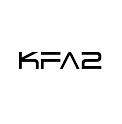 PowerColor Radeon PCS Plus R7 370
PowerColor Radeon PCS Plus R7 370
 AMD Radeon R7 370
AMD Radeon R7 370
Comparision PowerColor Radeon PCS Plus R7 370 vs AMD Radeon R7 370
Grade
Top specs and features
GPU base clock speed
RAM
Memory bandwidth
Effective memory speed
Gpu memory speed
Description
The PowerColor Radeon PCS Plus R7 370 video card is based on the GCN 1.0 architecture. AMD Radeon R7 370 on the GCN 1.0 architecture. The first has 2800 million transistors. The second is 2800 million. PowerColor Radeon PCS Plus R7 370 has a transistor size of 28 nm versus 28.
The base clock speed of the first video card is 935 MHz versus 925 MHz for the second.
Let's move on to memory. PowerColor Radeon PCS Plus R7 370 has 2 GB. AMD Radeon R7 370 has 2 GB installed. The bandwidth of the first video card is 182.4 Gb/s versus 179.2 Gb/s of the second.
FLOPS of PowerColor Radeon PCS Plus R7 370 is 1.87. At AMD Radeon R7 370 1.95.
Goes to tests in benchmarks. In the Passmark benchmark, PowerColor Radeon PCS Plus R7 370 scored There is no data points. And here is the second card 4349 points. In 3DMark, the first model scored There is no data points. Second 5813 points.
In terms of interfaces. The first video card is connected using There is no data. The second is PCIe 3.0 x16. Video card PowerColor Radeon PCS Plus R7 370 has Directx version 12. Video card AMD Radeon R7 370 -- Directx version - 11.1.
Regarding cooling, PowerColor Radeon PCS Plus R7 370 has 110W heat dissipation requirements versus 110W for AMD Radeon R7 370.
Why AMD Radeon R7 370 is better than PowerColor Radeon PCS Plus R7 370
- GPU base clock speed 935 MHz против 925 MHz, more on 1%
- Memory bandwidth 182.4 GB/s против 179.2 GB/s, more on 2%
- Effective memory speed 5700 MHz против 5600 MHz, more on 2%
- Gpu memory speed 1425 MHz против 1400 MHz, more on 2%
- Turbo gpu 985 MHz против 975 MHz, more on 1%
- Texture size 59.8 GTexels/s против 59.2 GTexels/s, more on 1%
- DirectX 12 против 11.1 , more on 8%
PowerColor Radeon PCS Plus R7 370 vs AMD Radeon R7 370: highlights


Performance
Memory
General information
Functions
Ports
FAQ
How does the PowerColor Radeon PCS Plus R7 370 processor perform in benchmarks?
Passmark PowerColor Radeon PCS Plus R7 370 scored There is no data points. The second video card scored 4349 points in Passmark.
What FLOPS do video cards have?
FLOPS PowerColor Radeon PCS Plus R7 370 is 1.87 TFLOPS. But the second video card has FLOPS equal to 1.95 TFLOPS.
What power consumption?
PowerColor Radeon PCS Plus R7 370 110 Watt. AMD Radeon R7 370 110 Watt.
How fast are PowerColor Radeon PCS Plus R7 370 and AMD Radeon R7 370?
PowerColor Radeon PCS Plus R7 370 operates at 935 MHz. In this case, the maximum frequency reaches 985 MHz. The clock base frequency of AMD Radeon R7 370 reaches 925 MHz. In turbo mode it reaches 975 MHz.
What kind of memory do graphics cards have?
PowerColor Radeon PCS Plus R7 370 supports GDDR5. Installed 2 GB of RAM. Throughput reaches 182.4 GB/s. AMD Radeon R7 370 works with GDDR5. The second one has 2 GB of RAM installed. Its bandwidth is 182.4 GB/s.
How many HDMI connectors do they have?
PowerColor Radeon PCS Plus R7 370 has There is no data HDMI outputs. AMD Radeon R7 370 is equipped with 1 HDMI outputs.
What power connectors are used?
PowerColor Radeon PCS Plus R7 370 uses There is no data. AMD Radeon R7 370 is equipped with There is no data HDMI outputs.
What architecture are video cards based on?
PowerColor Radeon PCS Plus R7 370 is built on GCN 1.0. AMD Radeon R7 370 uses the GCN 1.0 architecture.
What graphics processor is being used?
PowerColor Radeon PCS Plus R7 370 is equipped with Trinidad (Pitcairn). AMD Radeon R7 370 is set to Trinidad.
How many PCIe lanes
The first graphics card has There is no data PCIe lanes. And the PCIe version is 3. AMD Radeon R7 370 There is no data PCIe lanes. PCIe version 3.
How many transistors?
PowerColor Radeon PCS Plus R7 370 has 2800 million transistors. AMD Radeon R7 370 has 2800 million transistors





































